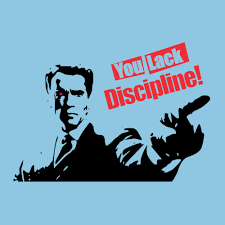Betting Advice to Make You Money
POSTED Nov 29, 2012
By
Derek Simon
As many of
my followers know (and by “followers” I mean those that regularly read
my columns
and/or listen to my podcast
— don’t want folks to think I’m building a compound), I have been on a quest to
prove that one can make decent money at the racetrack ($20K or more) on a small
stake ($500 or less) — without relying on rebates — for some time now.
Recently,
after a period of reasonable success but infuriating losing streaks, I decided
to shelve my more speculative and less consistent angles/methods in favor of
higher-percentage techniques. I wrote about this approach in “Thinking Small.”
After the
Breeders’ Cup, I began concentrating on two things:
1) Win
bets on overlays (horses with Win Factor Report fair odds less than their
actual odds).
2) Exacta
bets keying my top Win Factor contender with the next three Report contenders
(in specific races at specific prices).
So far,
this has worked like a charm. I’ve been more consistent for a longer period of
time than at any point in my handicapping life, save when I used to spend hours
analyzing races manually (prior to the advent of simulcast wagering and the development
of my computerized programs).
Since Nov.
7, when I this experiment began, until yesterday (Nov. 28), I have accumulated
a 26 percent overall ROI, with a 30 percent ROI on win bets and a five percent ROI on
exacta bets. During this time, my bankroll has nearly doubled and I have even
played a smattering of standardbred events with equal success.
 |
(Click
on image to enlarge)
|
 |
| (Click
on image to enlarge) |
 |
(Click
on image to enlarge)
Of course,
while I’m encouraged by the early returns, there’s still a lot of time and
challenges ahead of me. However, if — excuse me, when — I succeed, I want to write about the experience (I’m documenting
everything I do) to help other players, because I think the psychology behind
successful investing/gambling is nearly as important as one’s handicapping
acumen.
It will
probably come as no great shock to anyone that I have made far fewer bad bets or
silly mistakes this time ‘round (in the past, I’ve shown a talent for betting the
wrong numbers or getting shut out). Keeping my bets simple is clearly part of
the reason for this — and it is why I believe that players need to understand
their own psyches to succeed as gamblers.
|
 In many
ways, I’m a stereotype of my German ancestry when it comes to wagering — I need
structure, consistency and discipline to succeed. When any of those three
elements is missing, I struggle and can, seemingly without effort (another
talent), turn a good handicapping effort into a financial disaster.
In many
ways, I’m a stereotype of my German ancestry when it comes to wagering — I need
structure, consistency and discipline to succeed. When any of those three
elements is missing, I struggle and can, seemingly without effort (another
talent), turn a good handicapping effort into a financial disaster.
So, before
you attack the windows today (preferably, not literally), ask yourself: What is
it that I’m good at? What is it that I’m poor at? And, most importantly, what
is/are the trigger(s) that lead to poor money management when I’m betting on
the races?
Answer
those questions and you might just make some money — or at least not lose as
much.
The Perfect Negative Show Pool Bet
I’ve often
opined that the best bet in racing is a show bet on a horse other than the
favorite in races featuring a negative show pool — particularly at tracks that
use net
pool pricing.
Now, I
like these bets in almost all instances; however, the very best betting
situations occur when the race favorite is weak or vulnerable. And, generally
speaking, the most vulnerable favorites are confirmed frontrunners… like the
one that I spotted on Nov. 26:
 |
| (Click
on image to enlarge) |
|
|
| (Click
on image to enlarge) |
That day, in the fifth race at Parx Racing, D’Tiger
controlled $22,543 of the $26,523 (85 percent) bet to show. Yet the New York
import had a fatal weakness: not only had he not won from off the pace, but he
had also been recording some pretty mediocre early speed rations (my own
measurement of early energy disbursement).
Given the presence of Notre Grande in the field, I thought
there was a pretty good chance that D’Tiger would have to
rally from off the pace or, at the very least, go a lot faster early — and I sure as heck didn’t think he was 2/5 (his
post-time odds) to do that successfully.
 |
| (Click
on image to enlarge) |
Moreover, I felt that if Norte Grande produced an ESR of -10 or less ("brisk" to "demanding" on my scale) — something he had done in three of his eight prior races — D’Tiger
might lose heart altogether and finish out of the money.
As it turned
out, I was right and lucky. Norte
Grande did, in fact, post a sub-minus-10 ESR and D’Tiger made his plight worse by
stumbling at the start.
 |
| (Click
on image to enlarge) |
|
|
I collected $20.20
to show on Norte Grande and another $9.20 to show on Grande Prelude, who I
thought was a safe show bet whether D’Tiger ran his race or not.
These
situations occur a lot more often than one might think, so it pays to keep one’s
eyes peeled. Again, I think it is the best bet in racing. One can still cash in
instances where the big favorite finishes in the money, and when the big
favorite runs up the track… well, you get show payoffs like the ones above.












323 comments:
«Oldest ‹Older 401 – 323 of 323Post a Comment